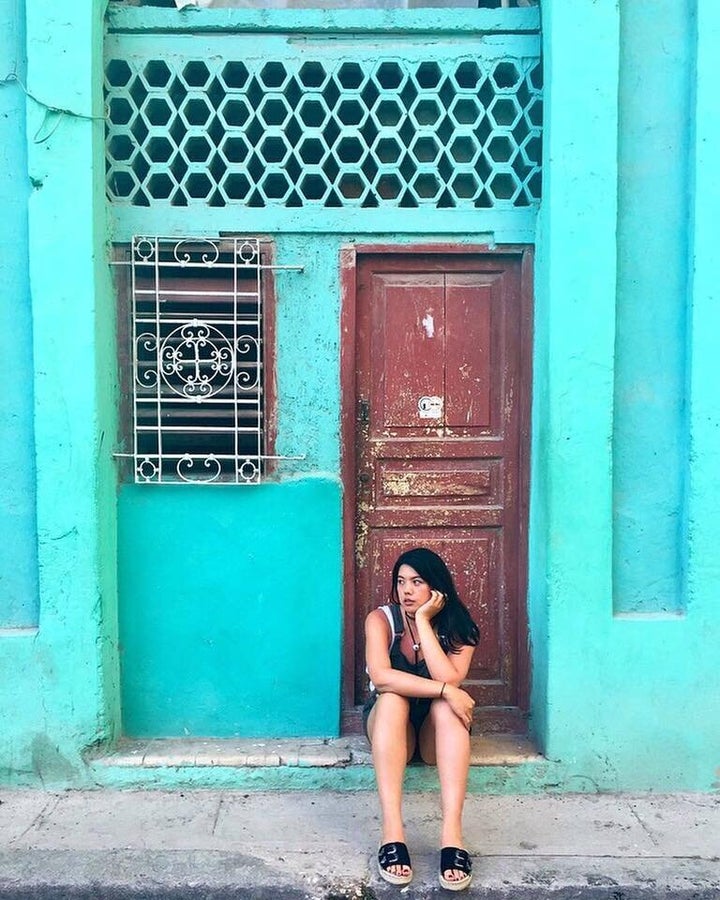
As a first-generation Asian American, I didn’t fully understand until adulthood that being able to openly discuss my mental health is a privilege.
Like so many other immigrants, my parents didn’t have time to deal with their negative emotions when they were starting out as a young family. “Self-care” was not in their vocabulary. To pause could mean sinking and they needed to keep swimming. They had to push past their emotions in order to work five times harder (while being five times more agreeable) in order to be seen as “hardworking” and “good” enough to be taken seriously in America.
To talk about struggles with mental health is considered a weakness or taboo in many BIPOC communities. My emotions, both good and bad, were never something my family sat around the dinner table discussing. Instead, it was assumed we all would hide or work through our negative emotions by ourselves. Even showing vulnerability through affection was difficult and love was more often expressed through acts of service. A plate of sliced fruit placed in front of you, for example, is the ultimate Asian mom gesture to show they care.
Perhaps thanks to both nurture and epigenetics, anxiety has been my baseline for normal as long as I can remember. As a child, I would stay awake at night regretting that I’d circled the wrong answer on a test ― an answer that I’d immediately looked up after turning in my paper ― or unsettled that my crayons, which I organized by the colors of the rainbow (obviously), were out of order. As an adult, my anxiety often led me to overthink every single interaction I had with just about everyone.
When I began to verbalize my anxiety as an adult, my family ― always well-meaning but practical ― was quick to suggest practical solutions to my anxious or depressed moods:
“Maybe you need a walk for some fresh air.”
“You just need to stop thinking about it.”
“If you prepared better, there wouldn’t be anything to be anxious about.” (Great, I’ll just be hopping into my time machine now!)
“My emotions, both good and bad, were never something my family sat around the dinner table discussing. Instead, it was assumed we all would hide or work through our negative emotions by ourselves.”
It wasn’t until I was in my early 20s when I started having silent anxiety attacks in the stairwell of my office building ― which hindered my ability to work (sad that work is what got me to this realization) ― that I decided to seek professional help. My search was rushed and uninformed, as I didn’t speak to anyone I knew about it.
I felt embarrassed. In retrospect, I realize that while I know plenty about white co-workers and white influencers on social media going to therapy and the latest advice their therapist gave them, I can’t say the same about BIPOC I know. Only a couple of my closest friends have ever confided in me about going to therapy, and I know they aren’t bringing it up across the conference room at work. At the time, therapy did not feel like something that was geared toward someone like me.
After searching for therapists who took my insurance, I found one on New York’s Upper East Side, an easy trip from my job. At my first session, I started speaking about how my anxiety manifested in areas of my life. The therapist immediately suggested that the root of all this was that my parents had pushed me to overachieve (a common stereotype of first-generation Asian Americans). While that could very well be the case, I had not even spoken for more than five minutes nor had I mentioned my childhood, parents or anything about my upbringing.
I experienced that all-too-familiar tingly, hot-cheeked feeling of being on the receiving end of a microaggression, but I kept going. I wasn’t dismissing her theory; I just wanted to finish speaking. After she quickly brought it up again, I told her I wasn’t positive that’s what it was and wanted to keep exploring all possibilities. I can’t say for certain what happened after I said it, but I definitely felt the mood shift to one of apathy, and we soon ended the session without any talk of me returning. I left feeling guilty, partly because opening up (to a complete stranger) about my mental health seemed somehow like a betrayal (of whom, I’m not sure), and I left feeling dismissed. I wondered if she would have insisted so quickly on the root cause of my problem had I been a fellow white woman explaining the same anxieties or if she would have had the same reaction to me once I had (not really) disagreed with her.
I then visited a primary care doctor (also white) near my Harlem apartment, hoping to discuss solutions or get a referral. Instead, he looked me up and down and said, “Maybe it’s your weight that’s giving you anxiety. Asian girls are usually more petite, no? I think your focus should be on weight loss first to see if that helps.” This was the kind of advice this doctor gave for mental health? Luckily, as I was then studying to become a dietitian, I knew better and hightailed my fragile ass out of there as fast as I could. But again, I was left with zero solutions and this time even more anxiety than when I had arrived.
“My experience trying to find adequate support for my mental health is only a tiny fraction of what the BIPOC community experiences. Even as a minority, I acknowledge I have many privileges that other BIPOC do not.”
My experience trying to find adequate support for my mental health is only a tiny fraction of what the BIPOC community experiences. Even as a minority, I acknowledge I have many privileges that other BIPOC do not (i.e., I’m middle class, cisgender, straight, light-skinned and thin, except in the eyes of that awful doctor).
BIPOC struggle with getting help for mental health issues on multiple fronts. Not only is admitting mental health problems stigmatized in many BIPOC communities, but health care professionals don’t take our issues as seriously as they do those of their white patients. Among adults with mental illness, a 2015 federal report found that 48% of white people received mental health care, versus only 31% of both Black and Hispanic people and only 22% of Asians.
As a registered dietitian, I also see this in play: Disparities are present in the diagnosis and treatment of eating disorders within BIPOC communities. Barriers to mental health care include lack of or insufficient insurance, mental illness stigma, lack of diversity among mental health care providers, lack of culturally competent providers, language barriers, and distrust in the health care system.
Additionally, society and mainstream media preach a physical ideal that focuses on the thin, white body, which can undermine BIPOC’s own positive body image. Many BIPOC who suffer from disordered eating do not get the help they need, in part, because their bodies do not reflect the image of a white person commonly associated with an eating disorder.
Researchers have found a trend toward higher rates of binge eating disorder in all minority groups. Hispanic adolescents are more likely to suffer from bulimia than their non-Hispanic peers. Black teens are 50% more likely than white teens to exhibit bulimic behavior, such as binging and purging. But studies show that BIPOC are significantly less likely to receive help for eating issues.
As a health care professional, I have seen firsthand how BIPOC receive lesser care. I have seen fellow practitioners being too impatient to find an appropriate translator, not giving patients a thorough education in their illness, promoting solutions (e.g., certain foods) that are Eurocentric and difficult to obtain (and therefore utilize) by the patient, and exhibiting a general lack of cultural competency.
“In order to provide quality care, practitioners must understand their patients’ cultures and backgrounds and be aware of the disparities and stigmas they face.”
You can feel hopeless when you reach out for help and this is what you receive. We health care providers have a duty to unlearn old behaviors and adopt better ones. These guidelines from the American Psychiatric Association are a good place to start. In order to provide quality care, practitioners must understand their patients’ cultures and backgrounds and be aware of the disparities and stigmas they face. If I had found a therapist or primary care doctor who took an active role in unpacking their own racial biases about Asians, for example, I might have felt better supported and helped to understand that my anxiety was not a shameful weakness I’d brought on myself.
Because of stigma, the rate of mental illness in BIPOC communities goes underreported. Health care practitioners may not even know of our mental health struggles, which can also underlie more physical symptoms. If we can’t openly discuss mental illness even with those closest to us, we simply won’t get the help we need.
So those of us who can need to start speaking up about mental health and demanding better care. Advocate not only for yourself but also for those in other BIPOC communities, if you have the privilege to do so.
And if you do not agree with your practitioner, if you feel their advice is based on bias, ask them to document their decision and state the reasoning. Documentation in health care is everything; their very license to practice depends on it. If they can’t give sound medical reasons to justify their decision, it could change their response. Hold them accountable.
We all deserve the privilege of proper care.
Have a compelling first-person story or experience you want to share? Send your story description to pitch@huffpost.com.
